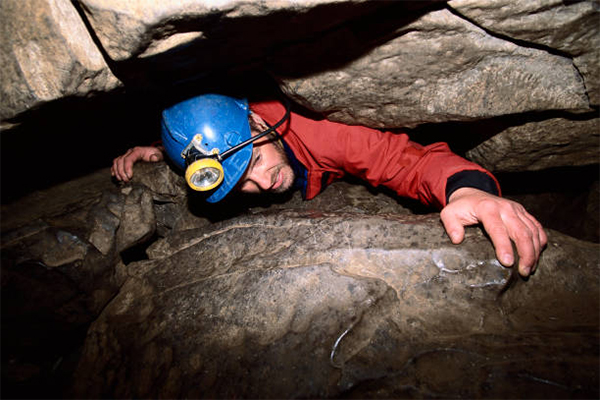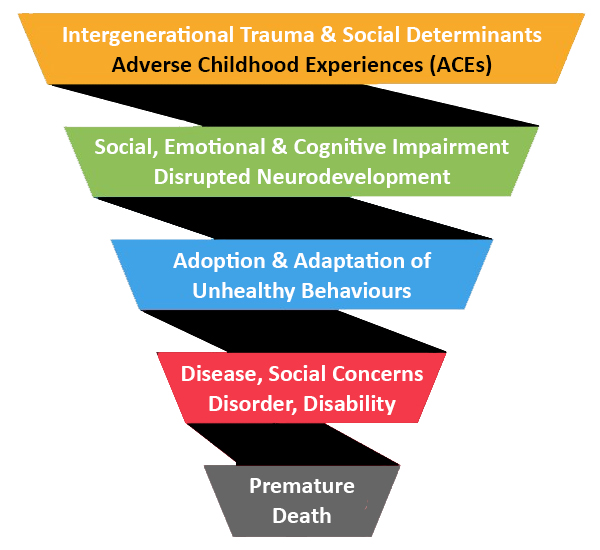
Terms DefinedThis page defines many of the key terms used in Outdoor Therapies, including those forms that engage with challenge, nature, and a blend of both. Outdoor therapy is last in the order of outdoor learning purposes as shown in this table. Everything to the left is also included in those cells showing a "+" sign. For indigenous land-based healing, a culturally appropriate counselor or elder may substitute for a Licensed Clinician (*).
|
|||||||||||||||||||||||||||||||||||||||||||||||||||||||
THERAPY OUTDOORSTherapy is a process conducted by a therapist, registered counselor, or licensed clinician. Therapeutic is a product and it can be inadvertent (as a result of spending time outdoors alone or with a group) or intentional (as an outcome of therapy). The outdoors is a place with special qualities, where we go to take risks, resolve conflicts, and commune with nature. Outdoor therapy is place-based (primarily outside), recognizes the human-nature bond (spiritual connection, affinity, or kinship), and features active body engagement (exercise, risk taking, conflict resolution, breathing, or sensory awareness), while engaging in psychotherapy. Challenge-based TherapiesAdventure therapy utilizes experiential learning activities (socialization games, team problem-solving initiatives, ropes/challenge courses, outdoors pursuits, etc.), challenges with perceived risk and conflict resolution in small groups. Some adventure therapy programs could take place indoors, but many choose to be outdoors, where nature provides consequences for learning and a spiritual connection. Wilderness therapy takes place in wilder and more remote locations that usually require an expedition journey to reach it or pass through it and primitive skills to sustain life within it. Wilderness therapy is generally considered a specialized subset of adventure therapy with additional nature-based content. Outdoor Behavioral Healthcare is an American term, identifying a sub-group of providers who are seeking insurance coverage and rightfully distancing themselves from the disasterous "boot camp" model (pretending to be outdoor therapy, where youth were punished and mistreated) of the past. Nature-based TherapiesForest bathing (ancient Japanese technique of shinrin-yoku) involves deep sensory immersion in a forest or jungle (nature) so as to soothe and heal by mindful concentration. Eco-therapy adds intentional psychotherapy in a sit or walk and talk approach that more specifically addresses treatment and recovery goals. Bush therapy is a term heavily used in the Pacific region (Australia, New Zealand, etc.), South Africa, and some parts of Canada to denote nature immersion in a wilder or more remote location, but not termed wilderness: a word that evokes human absence and yet is ignorant of indigenous presence. Bush adventure therapy nicely blends both nature and challenge. Land-based HealingUniquely Canadian, land-based healing is an indigenous approach to wellness that can be challenge and/or nature oriented, where people return to the ancestral territories that they were forcibly dispossessed from by colonization. In land-based healing, an emphasis is placed on cutural traditions, indigenous knowledge, rites of passage, and a deep richly spiritual connection with nature. Elders take the place of therapist, lead discussions in sharing circles, and tell stories thick in metaphor. The land is often blessed before, during, and after for its role in enabling healing and wellness. Sometimes, challenge-oriented land-based healing includes a travel component where clients move over the land or across the water camping on ancestral territories along the way. At other times, land-based healing is nature-oriented and fixed in location at a residential camp, but without travel, other than day trips to fish, hunt, trap, forage for food, and collect medicines. |
|||||||||||||||||||||||||||||||||||||||||||||||||||||||
OUTDOOR THERAPYOutdoor therapy can be primary treatment or may be adjunctive or enriching to other therapies and is most often tied to family, group, and individual therapy. The purposes of outdoor therapies are to: empower clients, build resilience, lower stress, develop coping strategies, enhance intrapersonal perceptions, improve interpersonal relationships and pro-social skills, resolve past trauma, transform behaviors, reduce resistance to change, and thus benefit client health (physical, emotional, mental, cognitive, social, behavioral, self, or spiritual well-being). This triangle figure shows the relative groupings of a dozen different outdoor therapies (defined below) as arranged among the three dimensions of challenge (non-therapeutic adventure programming), nature immersion (non-therapeutic environment programming) and intentional psychotherapy (traditional talk therapies).
Challenge (risk & conflict)Challenge combines taking risks (intrapersonal development) and resolving conflicts (prosocial interpersonal). Taking risks creates intense responses to the distress or eustress that arise from encountering perceived risk: the potential to lose something physical, mental, emotional, social, financial, or spiritual value. The clients’ intense responses stretch them outside their comfort zones and allow them to adapt to the dissonance with new feelings, thoughts, and behaviors. By repetition, their changes get reinforced to become transformative through reflection and facilitated discussion. In risk taking, clients build resilience that can be used to counter future adversities without relapsing to destructive choices. By the same process, resolving conflicts can develop much needed prosocial skills in clients such as trust, communication, cooperation, and collaboration. Nature ImmersionImmersing in nature has a calming effect on clients, especially those who present with stress related symptoms. Time spent in nature (with its restorative properties) is known to reduce distress, anxiety and depression, while elevating mood, immune response, and self-esteem. Attention Restoration and Biophilia Theories indicate that humans have this innate tendency to return to nature for rejuvenation and regeneration because we came from nature, even though we are detached from nature in a modern society with increasing screen time and life-style urbanization. Therapy IntentIntentional psychotherapy is guided by a therapist and aims to eliminate or control troubling symptoms, so clients can function normally and improve their health and healing. It enables them to recognize positive and negative feelings, the influence these have on their thinking, and the behaviors that result. With new understandings, clients can cope effectively and constructively with daily stressors. |
|||||||||||||||||||||||||||||||||||||||||||||||||||||||
 |
|||||||||||||||||||||||||||||||||||||||||||||||||||||||
In the challenge corner (cyan), lies adventurous programming that is inadvertently therapeutic or not therapeutic at all. These recreational, educational, or developmental programs are all about risk taking and conflict resolution with no nature immersion or intentional psychotherapy. In the nature corner (yellow) is found environmental programming that is also inadvertently therapeutic or not therapeutic at all. These ecology, natural resource, and sustainability programs are focused on nature, but have no deliberate challenges or intentional psychotherapy. In the psychotherapy corner (magenta) are traditional talk therapies. These Cognitive Behavioral, Dialectic Behavioral, or Narrative Therapies are centered on psychotherapy with no deliberate challenges or nature immersion. Challenge + TherapyAdventure Therapy, Wilderness Therapy and Outdoor Behavioral Healthcare are located in blue, between challenge (cyan) and intentional psychotherapy (magenta) with less sensorial nature immersion (yellow). These three forms of outdoor therapy use experiential activities (socialization games, problem-solving initiatives, ropes courses, outdoor pursuits, expeditions, or primitive living skills) conducted in small groups (of about 6-12 clients) to kinesthetically engage clients on cognitive, affective, behavioral, and spiritual levels. Some programs are conducted in wild and remote places (pristine or undisturbed by humans), with some further reliance on primitive living, deeper nature immersion, and/or longer expeditionary travel to access back-country. Nature + TherapyBush Therapy, Forest Therapy and Nature-based Eco-therapy are positioned in red, between nature immersion (yellow) and intentional psychotherapy (magenta) with very little challenge (cyan). These three forms of outdoor therapy share sensory immersion within nature, meditative mindfulness, guided concentration, creative arts, grounding, breathing, journaling, holistic health, stress reduction, and increased relaxation to achieve client restoration. Some programs highlight the calming effects of sunlight, fresh air, or vegetation and the impact they have on serotonin, dopamine, endorphins, vitamin D, melatonin, brain activity, and stress hormones. Challenge + Nature, NO TherapyAdaptive inclusive recreation, therapeutic leisure, and therapeutic eudaimonics are situated in green, between challenge (cyan) and nature (yellow), but with no intended psychotherapy (magenta). These are not outdoor therapies, but may be therapeutic. They are about serving clients living with a physical or mental disability, special need, or unique barrier and bringing happiness to clients living with a chronic or terminal disease, condition or disorder. Adaptive means modifying activity or equipment and adding prosthetic devices or assistive technology, while eudaimonics normalizes clients’ feelings who may be over-protected due to their existing maladies. Challenge + Nature + TherapyBush Adventure Therapy and Land-based Healing are found at the center in gray/grey as an equal balance of all three engagements. Bush Adventure Therapy combines adventure with environment and incorporates the indigenous perspective in a unique blend of nature (bush) with challenge (risk/conflict). Land-based Healing is run indigenously and takes place on ancestral territory, involves cultural activities, and Elder discussion in a return to the land from which they were dispossessed in order to live with nature in traditional and spiritual ways. Land-based healing can be conducted with travel (on expeditions) or without (in residential camps). Mostly TherapyHorticultural and animal-assisted therapies are found near magenta: mostly intentional psychotherapy, but with very little challenge or nature immersion, and a potent human to flora/fauna bond. These two involve therapist guided caring for and cultivating plants or caring for and interacting with animals. However, both are not fully dependent on the outdoors like the above therapies and can just as easily take place indoors. For this reason, they are sometimes excluded from the central band of outdoor therapies. |
|||||||||||||||||||||||||||||||||||||||||||||||||||||||
HEALTH & HEALTHCAREWe share the perspective of the World Health Organization (WHO), as agreed to by Canada in 1946, that health is not the absence of disease, disorder or infirmity, but the presence of a holistic state of complete physical, emotional, mental, cognitive, social, behavioral, self, or spiritual well-being. Health is a multidimensional construct that is determined by a state of living within an economically, politically, and environmentally dynamic world. A fundamental human right and duty, health is shaped by the interaction between a person's personal characteristics and their behaviours within that world. Consequently, healthcare is not just the medical aid provided by frontline health practitioners. It also engages the holistic approach above that considers the state of well-being. Healthcare is the conduct toward systems: families, communities, and societies. This conduct must ensure the vitality of those systems is delivered through an inclusive, effective and efficient plan for health. True healthcare considers social determinants such as: drinking water quality, food insecurity, adequate shelter, income inequalities, protection against crime or violence, and so on. Once, Canadians realize that healthcare is not medical care, and that healthcare refers to the broader spectrum of well-being, then we will begin to take ownership of our personal and family health. Next, we can turn our collective attention toward extending ownership and sharing responsibility for the health of our neighbours and the nation. |
|||||||||||||||||||||||||||||||||||||||||||||||||||||||
ACEs & TraumaConsider the case for ACEs in relation to mental illness and trauma. Adverse Childhood Experiences (ACEs) are valid and reliable predictors of deteriorating mental and physical health in adulthood. ACEs are preventable, potentially traumatic events that occur in childhood and common with a tremendous impact on health and social outcomes. Direct examples of ACEs include: physical, mental, and/or sexual abuse and/or neglect. Indirect examples involve having close family members, who are: divorced or separated, incarcerated, mentally ill, abusing substances, dead (by suicide or violence), and/or exhibiting violence. ACEs are associated with great concerns later in adulthood such as: mental health, injuries, maternal well-being, infectious diseases, chronic diseases, and dangerous behaviors. Reduction of the ACE downward spiral can be accomplished by strengthening economic support for families, promoting social norms to protect against violence and adversity, ensuring a strong start for children (including resilience building), enhancing skills to better handle stress, connecting youth to caring adults and activities, and intervening to lessen immediate and long term harm. Unresolved trauma resulting from ACEs can lead from socio-emotional and cognitive impairment in childhood, through adoption of unhealthy behaviours in adolesence, to disease, diability, disorders, and premature death in adulthood. Therapy resolves the trauma and reduces the chance of getting ill later in life. In most clients, trauma persists because the memory of a disturbing or devastating experience was not adequately processed by their minds. For them, unresolved trauma continues to bubble up as distressful sensations, feelings, thoughts, and behaviours. Unexpected events in their daily life can trigger the unresolved trauma to be revisited by flashback. Clients may turn to substance abuse to self-medicate or publicly "act out" to deaden and distract from their symptoms and flashbacks. Therapy, specifically those conducted outdoors with challenge and nature, offer a healthier alternative.
|


















